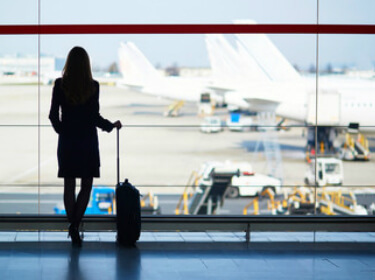Uncomfortable, cheap airline seats have been the butt of jokes for years, but budget airline carriers are laughing all the way to the bank. The popularity of super-cheap airfare options such as Spirit and Frontier is still rising and has never been higher.
Improving access to travel at home and abroad
The rise of budget airline carriers has had major effects on who flies and how. The introduction of ridiculously cheap flights to the market has forced major airlines to lower their prices in order to remain competitive. As a result, air travel is now more accessible to people who couldn’t have afforded to fly before.
Budget carriers all around the world from Canada and Europe to the underserved markets in South America and Africa have reported unusually high proportions of first-time flyers. The same effects are being felt in America, where young people and low-income Americans are flying at higher rates than in past years because of access to budget carriers. As of 2017, about one-third of all U.S. passengers fly with a budget airline carrier.
Discount carriers have filled profitable niches in many world markets, and their growing popularity is allowing them to cut into the profit margins of the big, full-service airlines. In 2016, more than 1 billion fliers worldwide flew on budget carriers — almost 30 percent of the 3.7 billion people who flew that year. That’s the highest percentage ever.
Effects on the market
In light of the growing demand, discount airlines have started to expand their network of available flights into the intercontinental market, previously the turf of only major international carriers. Norwegian Air Shuttle and Iceland’s WOW brought a combined 37 percent increase in available seats for sale this summer season for flights between the U.S. and Europe. Asian budget airline carriers are offering cheap flights from Korea and Malaysia to Hawaii, and they are seeking to expand into cheap flights to California.
Major airlines are taking notice of the newfound popularity of budget options, and they are scrambling to make up for the loss of customers. Whenever a budget company expands into a particular flight market, the major carriers flying that route have to drop the price of their cheapest seats in order to stay competitive.
One example of this can be found in Chicago. United currently is charging about $1,000 for coach seats on some Chicago to London direct flights booked for next March. The price of the same flights drops to $665 for dates starting in April, the week after budget carrier Norwegian Air is set to begin serving the same Chicago-London route with seats starting under $500.
Cutting costs
How do they manage to keep the prices so low?
Budget airline carriers cut costs wherever they can. They minimize training and maintenance costs by only using one or two different models of airplane. Additionally, these planes are often bought in bulk orders from large producers such as Boeing Co. to reduce overhead as much as possible. Companies also invest in ultra-efficient models to reduce overall fuel costs.
Additionally, budget airline carriers typically pay their employees less generously than larger carriers do. Since the market for budget airline tickets is so new, many of the budget airline companies are only a few years old, so most of their employees are newer and lack seniority, and the pay raises that come with it. Also, because of their relatively new status, discount carriers don’t have substantial pension obligations and often don’t use unionized labor.
Some of the cost-cutting measures that budget carriers take cut into the amenities that customers have come to expect from the standard flights offered by major carriers. Most ultra-low-cost flights do not provide food or in-flight entertainment, and they provide several inches less room than a standard economy seat by a major carrier. Most only allow a small carry-on and no checked baggage. One domestic budget carrier in Colombia is even trying to find a way to remove seats from their planes and provide extremely cheap standing flights.
Takeaway
In the last year, three of the four most profitable airlines in the world were ultra-low-cost budget airlines. Can these low costs and subsequent low prices be maintained long-term? Experts think otherwise.
As their workforce and planes age and the recent low costs of jet fuel rise, the cost of running a budget airline is going to become more and more expensive. These costs are going to have to be passed along to the consumer for the airlines to keep turning a profit. It’s great that these options are available now, and we should all take advantage of them while we can because it’s only a matter of time before the cost of flying is sky high once again.
Have something to add to this story? Comment below or join the discussion on Facebook.
Header image: Adobe Stock









































